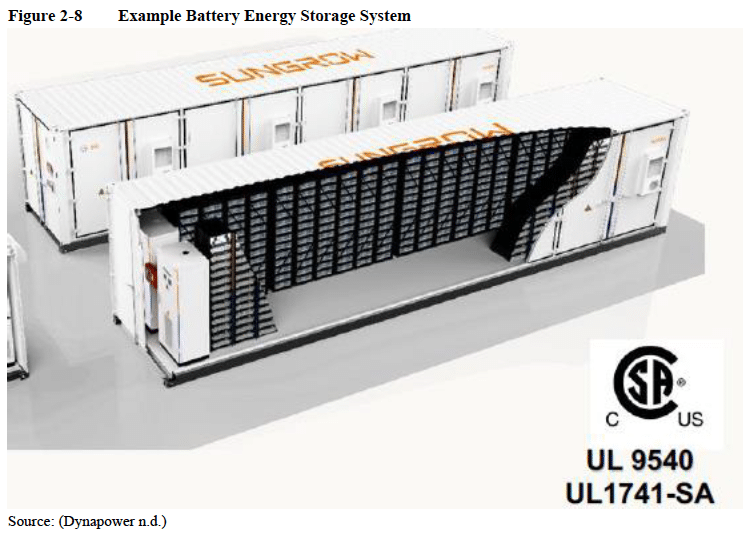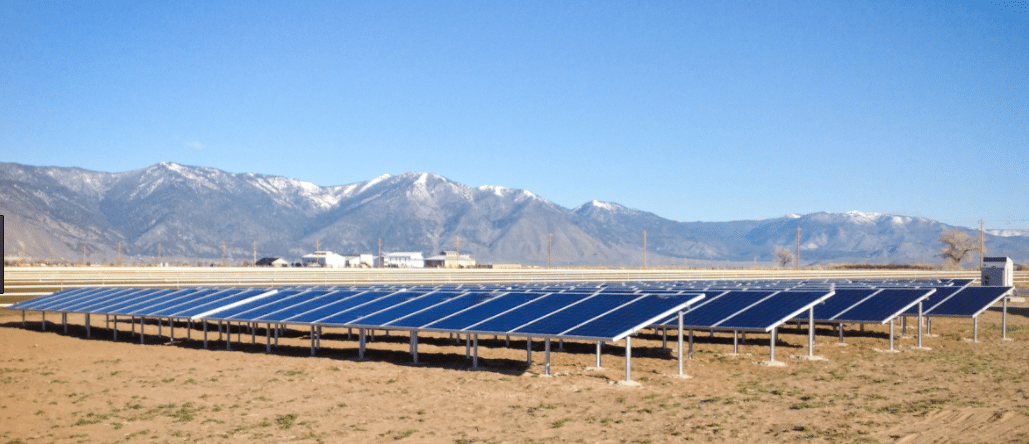It’s particularly hard to make a splash in the desert. For starters, there’s no water. The water that does exist does so only in the hallucinations of oasis experienced by doomed travelers, and it’s hard to make a splash in a hallucinated pool.
Despite these literal difficulties, in the world of figurative language, NV energy has made a splash, maybe even a tidal wave, as last night the company announced that it would be adding nearly 1.2 GW of solar and 590 MW of energy storage to its portfolio by the end of 2023.
What’s more is all of that capacity isn’t coming from some ambitious buildout program, like Florida Power and Light’s “30×30” plan. Instead all of this solar potential is set to be contained to three projects.
Let’s take a look at the new project crop:
First up is a project that we’ve actually followed pretty closely here at pv magazine, the 690 MWac Gemini Solar + Battery Storage Project. The project will be located on 7,100 acres of federally-owned land in Clark County. The energy storage portion will clock at 380 MWac and 1,520 megawatt-hours (MWh). However, outside of capacity, not much is known about the project. The developer (Quinbrook?) does not appear to have made the final decision as to technology, with an environmental impact statement filed with the U.S. Bureau of Land Management stating that the technology “may be” lithium ion. There is, however, a graphic to illustrate this system, featuring Sungrow battery systems.

The second-largest of the three projects is the 300 MWac Southern Bighorn Solar & Storage Center. The project, being developed by 8minute Solar Energy, will feature a 135 MWac, 540 MWh lithium-ion battery energy storage system. This project will be located 30 miles north of Las Vegas, on the Moapa River Indian Reservation. While it won’t be home to the state’s largest battery, it will become, once completed, the largest solar plus storage center built on tribal land. This project is expected to take slightly more than one year to build, with an anticipated construction start in mid-2022 and a commissioning date in late 2023.
Finally comes the baby of the bunch, the Arrow Canyon Solar Project. The baby is a funny designation to have, as in almost any other state this would be the largest project, if not larger than the state’s entire previous capacity. Arrow Canyon is set to clock in at 200 MWac, with a 75 MW battery storage system. The fun wrinkle with this project is that the development is for a 5-hour battery, rather than 4-hour with the previous two, which means that the system is actually 375 MWh. Also tribally-oriented, this EDF Renewables North America project is set to be located on the Moapa Band of Paiutes Indian Reservation, 20 miles Northeast of Vegas.
The three of these projects are having their power purchased by NV Energy in order to meet the state’s increased 50% by 2030 renewable energy portfolio standard, signed by Governor Steve Sisolak (D) in April.
So as has been apparent for quite some time now, if you’re looking to make a splash in the desert, you should throw away your swim trunks because California, Arizona and Nevada have proven that the real waves are made through massive, utility-scale, development.
This content is protected by copyright and may not be reused. If you want to cooperate with us and would like to reuse some of our content, please contact: editors@pv-magazine.com.









Adding tracking would have greatly increased output over more time covering a lot of the duck cutting battery needs.
It is smart as this will be viable for decades vs new FF generation will be stranded in a few yrs after it gets built as more loads turn to generators themselves.
Have you read somewhere that these won’t have trackers? When I reported on Gemini Solar’s environmental impact statement, it said the developer hadn’t made a decision on this yet, and I haven’t heard about the other two.
Any particular reason they’re waiting 4 years to save Nevada ratepayers money? NVE is dependent on gas plants for profit, wake up Nevada!
No cost information.
Maybe that is not the author’s fault, but until we see the money, how can we really understand these projects?
Sounds like a ‘Government project’. Yeah, maybe it’ll be solar PV with some ‘kind’ of energy storage system, perhaps lithium ion batteries. Maybe it’ll be bi-facial solar PV panels over 5,000 or 6,000 acres, maybe tracking, maybe lithium ion energy storage.
When you start to talk hundreds of MW of energy storage, then finding the right balance of economies of scale, useful life of the storage media and ease of O&M repair and replacement becomes a big deal. Right now lithium ion used in these very large utility scale energy storage systems have been high energy density products that also tend to over heat and burn, like the LMO battery chemistry used by TESLA and many energy storage companies. The (real World) test has been the TESLA energy storage system installed in Australia in 2017. How long will it last? How financially independent is the site and when will it pay for itself? Will the energy storage last 10 years? 15 years?, less? Although redox flow batteries have energy densities much less than LMO batteries, it is ‘claimed’ that redox is a twenty year useful life product. The end of life of the plant can be offset by recycling or using the ions for manufacturing. The battery does have an end of life ‘value’. Lithium ion battery technology needs, air conditioning, monitoring, battery management system to control charge/discharge of the battery packs and a fire suppression system for each energy storage unit. The redox flow battery, doesn’t need as much ‘care’, finding the right ion chemistry would correct some of this concern over all.
Proper Engineering of the energy storage system regardless of technology used should be modular and enable O&M service and repair personnel to be able to change out technologies in power blocks. In this way the energy storage system’s effective storage life can be extended indefinitely.